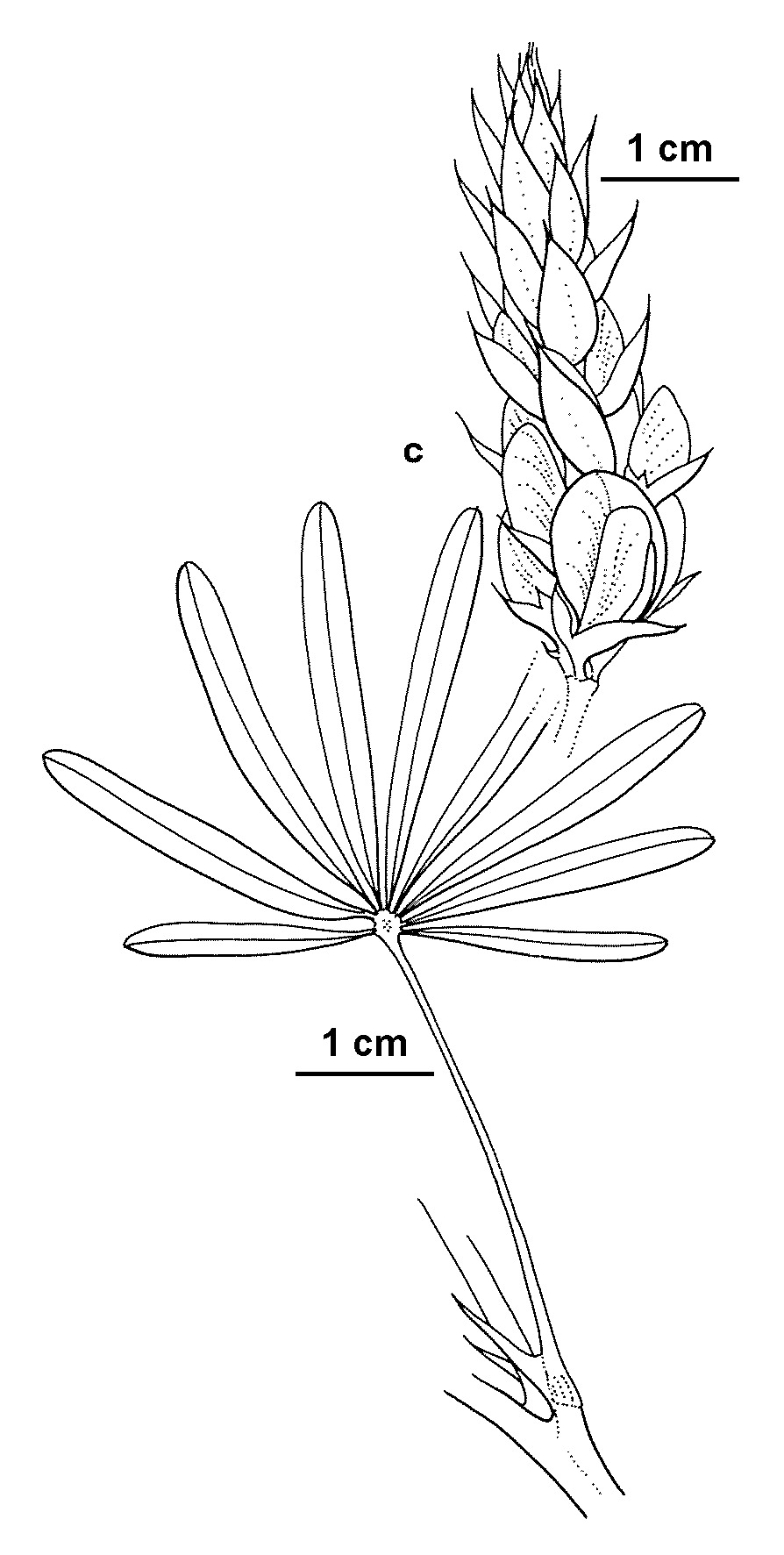Lupinus angustifolius
L. Narrow-leaved LupinErect annual herb to 1.5 m tall; stems much-branched, pubescent with appressed or spreading hairs. Leaves palmately 5–9-foliolate; petioles 2–6 cm long, pubescent; leaflets linear to linear-spathulate, 15–40 mm long, 2–5 mm wide, upper surface glabrous, lower surface appressed-villous or silky, apex obtuse, often minutely mucronate; stipules subulate, to c. 15 mm long. Inflorescences 5–20 cm long; peduncle 1–3 cm long; flowers mostly alternate, unscented; pedicels 2–4 mm long; bracteoles minute, persistent. Calyx 7–9 mm long, silky, upper lip deeply 2-toothed, lower lip longer, shallowly 3-toothed; corolla 11–15 mm long, mostly blue, often purple-tinged, sometimes white or cream. Pod 35–55 mm long, 8–10 mm wide, sessile, densely villous; seeds 4–6, ovoid, 5–7 mm long, smooth, brown with white or brown markings. Flowers spring.
VVP, VRiv, GipP, CVU, NIS, Strz. Also naturalised WA, SA, Qld, NSW, Tas. Native to Europe, the Middle East, northern Africa. In Victoria collected from near Ballarat in pasture, and near Warragul, the Gurdies and Swanpool along a disturbed roadsides.
Jeanes, J.A. (1996). Fabaceae. In: Walsh, N.G.; Entwisle, T.J., Flora of Victoria Vol. 3, Dicotyledons Winteraceae to Myrtaceae, pp. 663–829. Inkata Press, Melbourne.
 Spinning
Spinning



